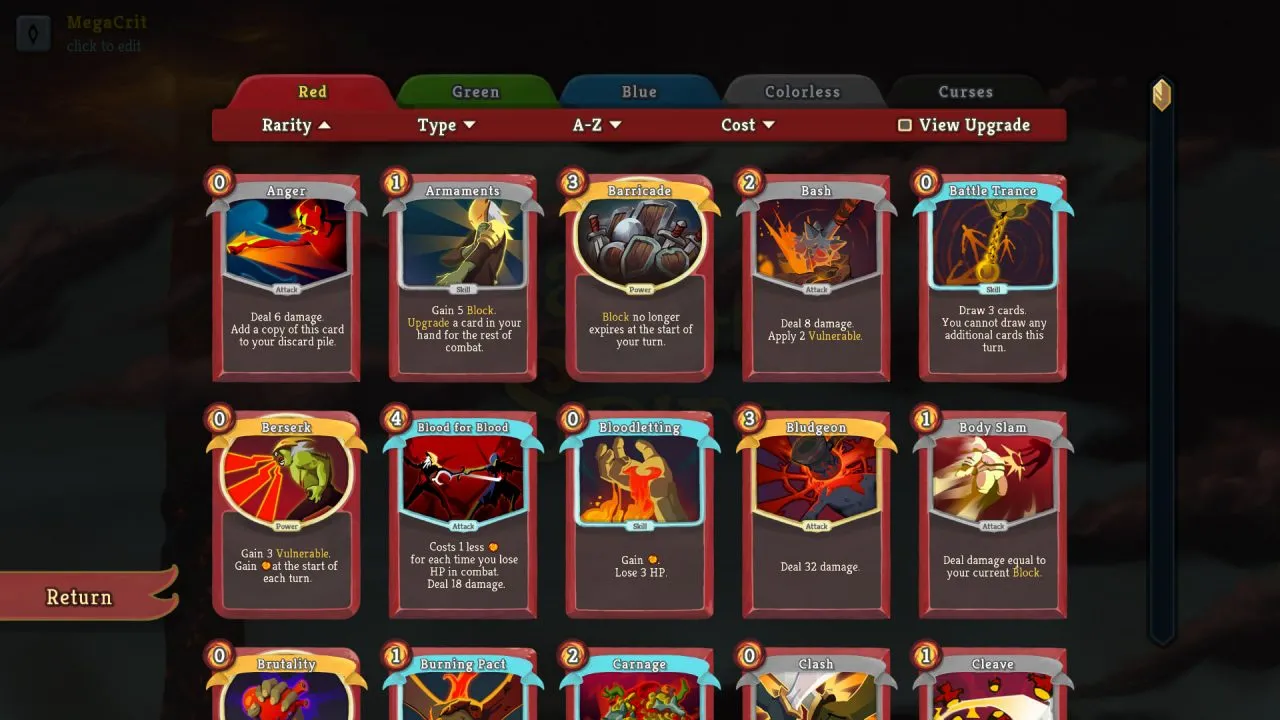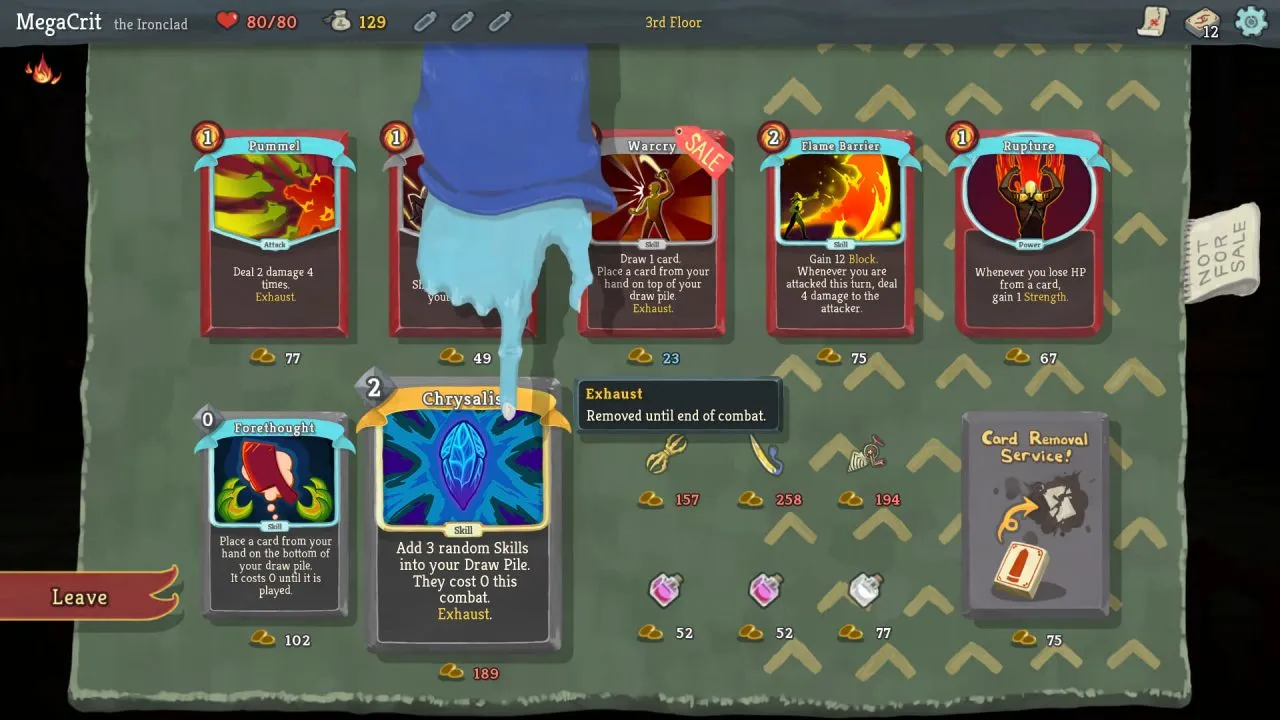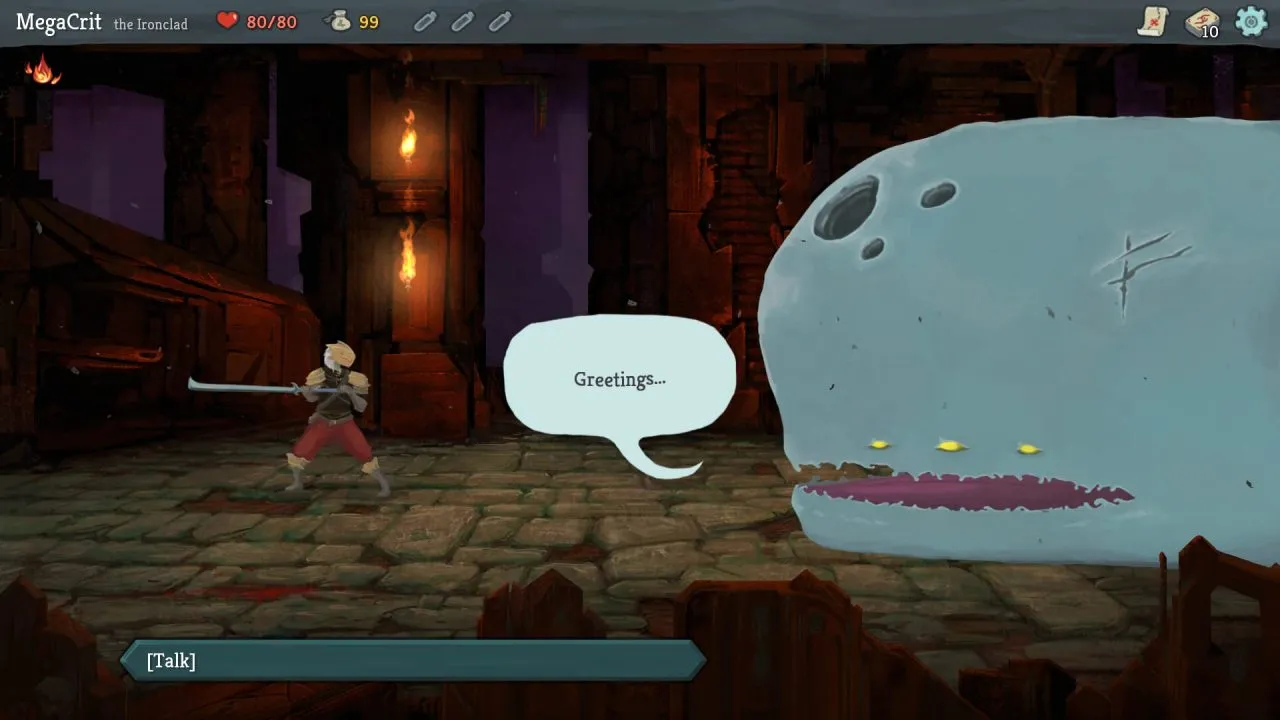
Slay the Spire: A Deep Dive into Deckbuilding and Roguelike Fusion
Contents
Slay the Spire masterfully blends seemingly disparate genres: deckbuilding card games and roguelike dungeon crawlers. Surprisingly, this fusion creates incredible depth and a highly addictive experience, despite its deceptively simple design choices. Let’s explore how Megacrit’s Slay the Spire achieves this compelling gameplay.
Order from Chaos: Building Your Deck
Slay the Spire begins simply. Choose one of four character classes, each with a starting deck of basic attack, defense, and special cards. This initial deck is the only predictable element. Each run through the Spire’s three acts sees players acquiring new cards from a massive pool of over 350, each class having over 100 unique cards, plus 30+ “colorless” cards usable by everyone. This creates nearly limitless deckbuilding potential.
 Slay The Spire Gameplay
Slay The Spire Gameplay
After each combat encounter, players choose from 1-5 randomly offered cards, forcing careful consideration of deck synergy and overall strategy. The roguelike element shines here. Card rewards are rarely repeated within a run, and even less so between runs, compelling players to adapt their tactics constantly. This dynamic card acquisition forces players to build a unique “best-fit” deck for each playthrough.
 Choosing new cards
Choosing new cards
To make this system work, card design is crucial. Unlike traditional card games where deck composition is known, Slay the Spire thrives on chaos. Cards are designed as versatile pieces, synergizing with others but rarely dictating the entire deck’s direction. This encourages experimentation and evolving strategies rather than adhering to a fixed plan.
Relics and the Risk/Reward Cycle
Adding to the addictive gameplay loop are relics, randomly dropped by elite enemies or found in special encounters. These items offer powerful bonuses, often with significant drawbacks, forcing players to balance risk and reward. After each Act’s boss fight, players choose one of three powerful relics with potentially game-changing limitations.
 Slay The Spire Character
Slay The Spire Character
This creates Slay the Spire’s core addictive cycle: start, die, repeat. Higher floors bring tougher enemies, but also stronger cards and relics. Players don’t become inherently stronger between runs, but they learn which combinations work and which don’t, leading to smarter deckbuilding and strategic decisions.
 Slay The Spire Combat
Slay The Spire Combat
The game encourages experimentation, making it endlessly replayable. A detailed custom mode allows for further experimentation, while daily challenges offer competitive score-based gameplay.
Limited Presentation
Despite the engaging gameplay, other aspects of Slay the Spire are relatively limited. Character visuals are static, card art is simple, and the game lacks a clear narrative or explanation for the Spire’s inhabitants and enemies, leaving players with intriguing questions and no answers.
 Slay The Spire UI
Slay The Spire UI
Conclusion
Slay the Spire’s strength lies in its innovative blend of deckbuilding and roguelike mechanics. The dynamic card acquisition, strategic relic choices, and ever-changing challenges create a highly addictive gameplay loop. While its presentation is minimalistic, the depth and replayability of Slay the Spire are undeniable, making it a must-play for fans of strategy and card games. Its addictive core gameplay loop will keep players coming back for “just one more run” long after they’ve climbed the Spire for the first time.





Comments (0)